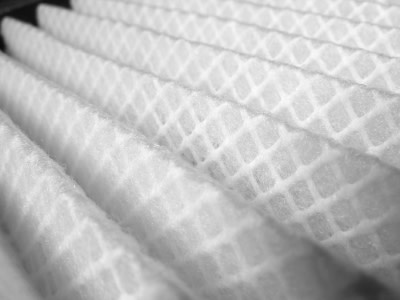Air Filter Anatomy
Thousands of years ago, life was simpler. People lived off the land, drank fresh water from rivers, and breathed clean air. The modern world comes with lots of comfort and convenience but also complicates things.
Now our food is mass produced and delivered to us from farms, but it’s genetically modified and covered in pesticides. We have our water piped to us from miles away, but it needs to be treated with chemicals to make it safe. And our homes may be good at keeping us protected, but this also means they are great at trapping allergens and dust. And of course we need a solution for this too: air filters.

Air filters work in two ways. Some clean the air by running it through a sheet of material, usually microfine fiberglass media, folded many times over to catch as many particles as possible. This is typically referred to as mechanical filtration. Other filters work by charging particles in the air and then trapping those charged particles on flat plates. This technology is not as effective in removing the smaller sized particles.
The government sets standards for the air filters that qualify as HEPA filters, or High Efficiency Particulate Air filters. The filter must reduce 99.97% of all particles sized 0.3 microns or larger from the air in order to be called a HEPA filter.
Many of our regular readers will already know first hand how well HEPA filters work. They can reduce allergens, such as pollen, pet dander, mold, bacteria and dust, from the air. Families with allergy and asthma sufferers can greatly reduce or eliminate their symptoms just by using vacuums and air purifiers with HEPA filters.
HEPA filters are actually so efficient at removing particles that the Department of Homeland Security recommends using them to prevent against possible biological attacks. If you don’t have a filter installed in the home, you can use a portable air purifier to safeguard your living area.

The key benefit of HEPA air filters is that they remove the smallest of particles that stay suspended in the air. These tiny particles are the most dangerous as they are more likely to be breathed deep into your lungs where they can cause havoc. While air filters can remove harmful particles, they won’t be able to eliminate particles that are so big they aren’t floating in the air. The largest of particles will settle to the ground and will generally need to be vacuumed.
One thing air filters and purifiers can’t do is remove odors, unless they contain activated carbon. Odors are gases, and they will pass right through a HEPA filter. They need to be adsorbed into carbon, and the best performers have a combination of sufficient surface area and amount of carbon.
Learn more about allergy development and how you can control allergens at home.
